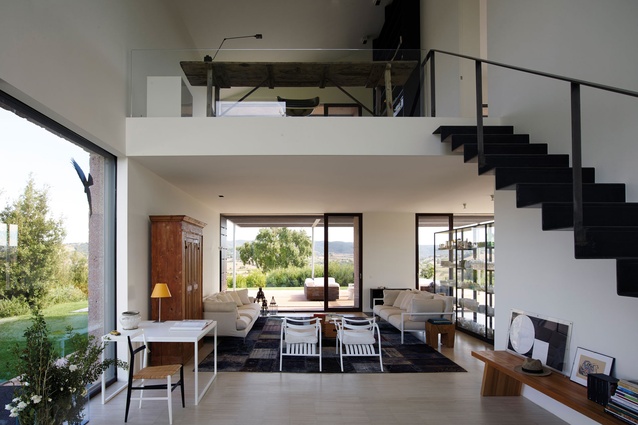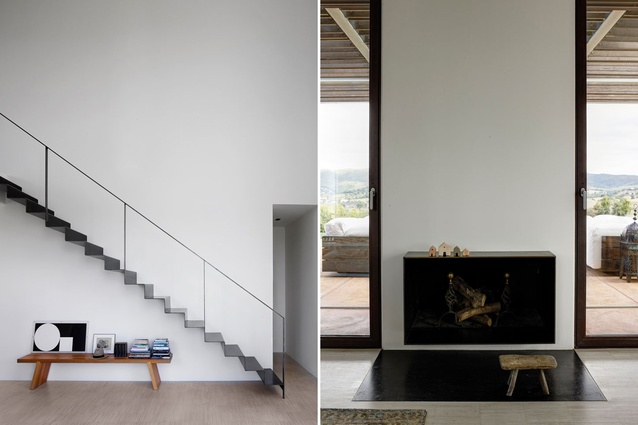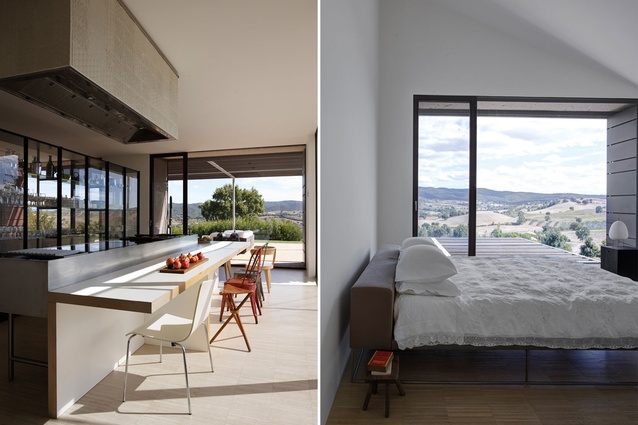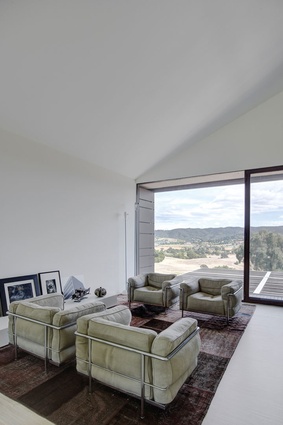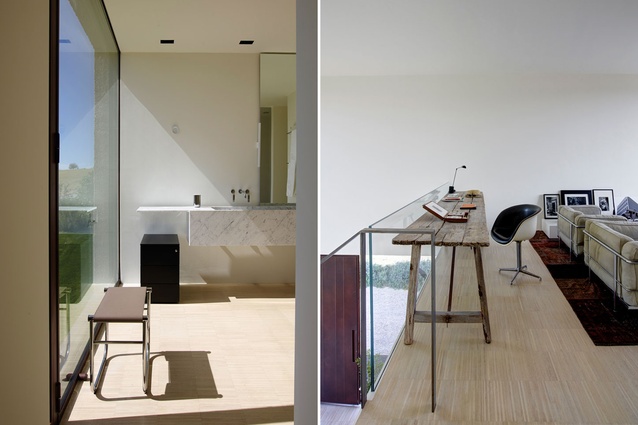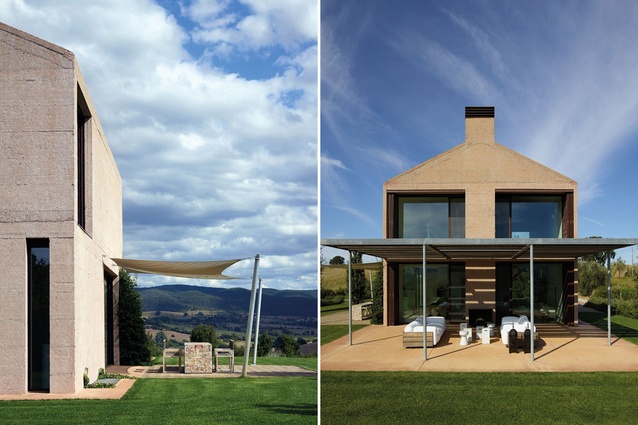Under the Tuscan sky
Set amongst olive groves and rolling hills, and with perfect sea views, this Italian villa serves as a rural retreat for iconic designer and architect Piero Lissoni.
For the Italian architect and designer Piero Lissoni, context is everything. It’s vital to a polymath who works all over the world and across a wide spectrum of different disciplines, designing everything from buildings to furniture to watches. There are Lissoni hotels in Miami, Baden-Baden, Korea, Shanghai, Singapore, Tokyo and beyond as well as a portfolio of residences, private villas and superyachts.
And then there is a renowned collection of furniture and product design, much of it produced in association with some of the great Italian innovators, including Cappellini, Cassina, Boffi and Kartell. With such a range of projects – echoing the multidisciplinary approach of Italian mid-century masters such as the Castiglioni Brothers and Vico Magistretti – the context and scale of each commission becomes all important.

“The secret is to be in context,” says Lissoni. “It’s crucial. I am an architect but I am always changing scales. I might be designing a watch for Alessi but then, two days later, I’m designing a skyscraper. You have to be open minded to be an architect and a designer at the same time and attune your mind to these different measurements. You have to shift your thinking and adapt to the scale of the project one way or another.”
Context and scale were key considerations when Lissoni designed a villa for himself on top of a gentle hillside in the Maremma region of Tuscany, not far from the coast and the town of Grosseto. This is Lissoni’s rural retreat: an alternative to his home and studio in Milan and a place to recharge, surrounded by the rolling hills with their patchwork of pastures, olive groves and forest.
The house is tailored to Lissoni’s needs and priorities. But it is also of its place: designed as a response to the landscape and setting, while still being decidedly contemporary and of its time.
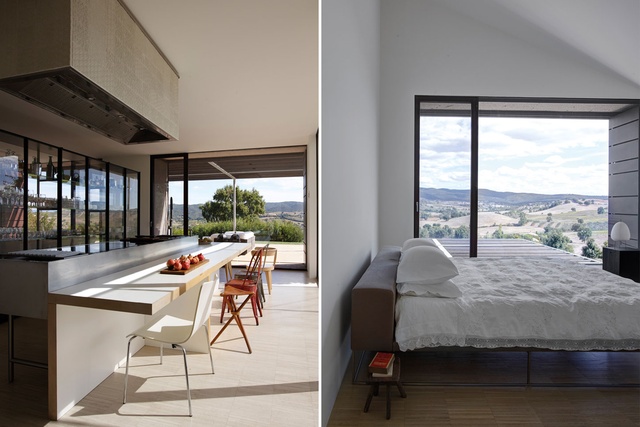
“I wanted to live in a super-modern house but, at the same time, feel that it is totally natural,” says Lissoni. “I mixed stone from the area into the concrete and here the earth is pink, a special ‘rosa’, and they put this colour into the walls of their houses. It is traditional, in a way, but it’s not an imitation. It’s also a high-tech building, made of concrete and super strong with very, very thin walls and a steel frame.”
Lissoni grew up in Milan and counts himself 100 per cent Milanese. He studied architecture at the well-regarded Politecnico di Milano and launched his studio in the city back in 1985. But he has also known Tuscany for a long time. His grandparents owned a property in Maremma, which he visited as a child. Eventually, he decided that it was time to come back.

“I’m a great fan of Maremma. For me, it’s the real Tuscany, with these beautiful hills, and nothing like Chianti-shire,” he says. “The coast is so strong with the forest at the back and the small villages. It’s very pure – forest, beaches and sea. That’s it: finito.”
Some friends told him about a modest hilltop farm that was for sale in the area. Just two days after visiting the farm, he was in his notary’s office signing the papers to buy. The location is clearly very special, with open views on all sides, but the 1950s’ farmhouse that sat on top of the hill was not.
Lissoni designed his new house to sit in its place, with roughly the same dimensions but a very different design approach and aesthetic. The position was adjusted slightly to make the best of the views and to protect the house against the winds, which can sometimes be strong here. It took him six years to gain planning permission for the house and one year to build it.
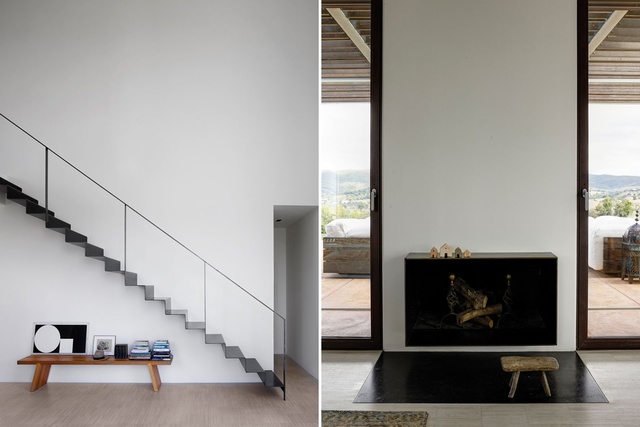
“I wanted to design an architectural house that was a conversation between architect and client,” Lissoni says. “One moment I was the architect and the next I was the client. I decided to design a building that was like a child’s sketch of a house, with a purity to it and no frills. I started to design the house around the nature of the site but with this simple, child-like shape.”
The house features a series of large picture windows framing the vista, with shutters that protect the residence when not in use while also offering shade as needed. An outdoor sitting room shelters under a timber-and-steel awning at the front of the house, while an outdoor dining area is positioned to one side.
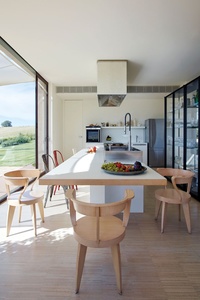
Within, Lissoni has created a largely open-plan layout on the ground floor, with no interference from pillars or unnecessary partitions. A double-height hallway flows through into a seating zone, featuring a double-sided fireplace, which also serves the outdoor sitting room. A glass display cabinet, designed by Lissoni for Porro, offers a light sense of separation from the kitchen alongside.
The kitchen itself is a customised version of a Lissoni design for Boffi, for whom he has worked as an art director since the mid-1980s, shortly after opening his practice. A pantry and powder room are the only separated spaces on this level of the house.
Upstairs, a mezzanine gallery overlooking the open hallway holds a spacious study and library. There is just one bedroom, with an adjoining bathroom and dressing room. Lissoni encourages visiting friends and family to stay in one of the local bed and breakfasts, which have charms of their own, while he enjoys the privacy of his home.
“I am very open to them coming and spending time at the house but at night they stay nearby. I like that idea of being alone sometimes without a classical social life. But, at the same time, I am very social. I like to cook, to talk, to drink some wine and taste some incredible food. So I do host friends here but, at night, I like to be alone with my three golden retrievers. I can play the Sex Pistols as loud as I like or The Four Seasons and I won’t disturb anyone although, sometimes, just listening to the wind is enough.”
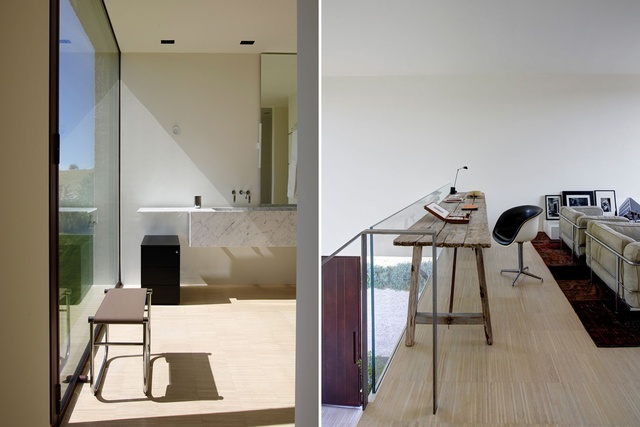
For the choice of furniture, Lissoni was anxious to avoid living within a catalogue of his own designs. There are self-designed pieces but mostly prototypes or custom models. Other designers are well represented, with chairs by Jasper Morrison in the sitting room and classic LC2 armchairs by Le Corbusier, Jeanneret and Perriand up in the library. There are also pieces with family connections, such as the period wooden cabinet downstairs that once belonged to Lissoni’s grandparents.

Lissoni has also spent time on the gardens and grounds, planting some new trees and greenery to add to the mature oaks already living on the hilltop. A slim swimming pool, inspired by the simplicity of agricultural water tanks, sits a stone’s throw from the house. At times, a shepherd steers his flock across the hillside nearby. The quality of the light, the silence of the setting and the beauty of the landscape are seductive constants.
A little way off, on the neighbouring pasture, Lissoni has constructed a very simple belvedere: little more than a minimal wooden platform for viewing the landscape. It has become a favourite spot for appreciating the natural wonders of Maremma.
“It is a very special spot for me,” Lissoni says. “I can sit there and look at the sea and you have this incredible light. It is a little dramatic and a bit romantic. I go up with a folding chair and sit down and stay for a while. You can see Giglio and the islands. On a beautiful winter’s day, you can see Corsica about 85 miles away but feel that it’s close by. It is fantastic.”
This is an extract from Making House: Designers at Home by Dominic Bradbury and Richard Powers (Rizzoli, $75, available now). Printed here by author’s permission.


